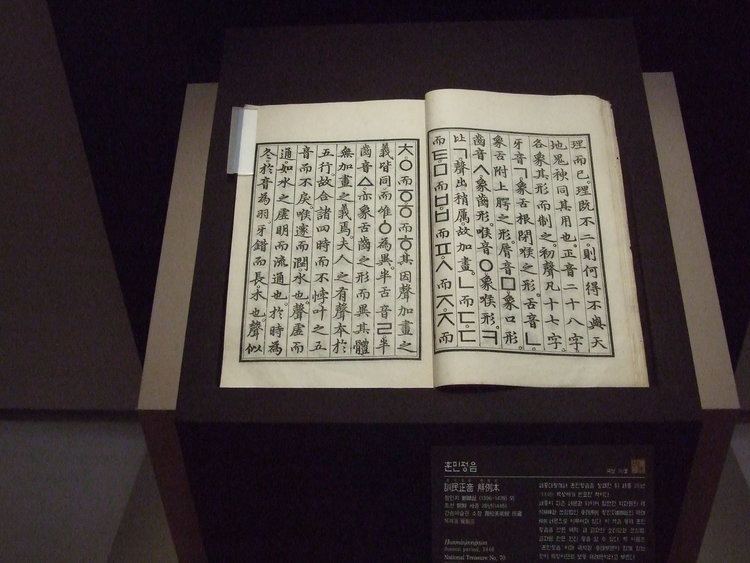Hanja 訓民正音 McCune–Reischauer Hunminjŏngŭm | Revised Romanization Hunminjeong(-)eum Originally published 1446 | |
 | ||
Similar Yongbieocheonga, Jikji, Uigwe, Nanjung Ilgi, Dongui Bogam | ||
Hunminjeongeum (lit. The Correct/Proper Sounds for the Instruction of the People) is a document describing an entirely new and native script for the Korean language. The script was initially named after the publication, but later came to be known as hangul. It was created so that the common people illiterate in hanja could accurately and easily read and write the Korean language. It was announced in Volume 102 of the Annals of King Sejong, and its formal supposed publication date, October 9, 1446, is now Hangul Day in South Korea. The Annals place its invention to the 25th year of Sejong's reign, corresponding to 1443-1444.
Contents
Content
The publication is written in Classical Chinese and contains a preface, the alphabet letters (jamo), and brief descriptions of their corresponding sounds. It is later supplemented by a longer document called Hunminjeongeum Haerye that is designated as a national treasure No. 70. To distinguish it from its supplement, Hunminjeongeum is sometimes called the "Samples and Significance Edition of Hunminjeongeum" (훈민정음예의본; 訓民正音例義本).
The Classical Chinese (漢文/hanmun) of the Hunminjeongeum has been partly translated into Middle Korean. This translation is found together with Worinseokbo, and is called the Hunminjeongeum Eonhaebon.
The first paragraph of the document reveals King Sejong's motivation for creating hangul:
異乎中國
與文字不相流通
故愚民 有所欲言
而終不得伸其情者多矣
予爲此憫然
新制二十八字
欲使人人易習便於日用"耳"(矣)
Versions
The manuscript of the original Hunminjeongeum has two versions:
